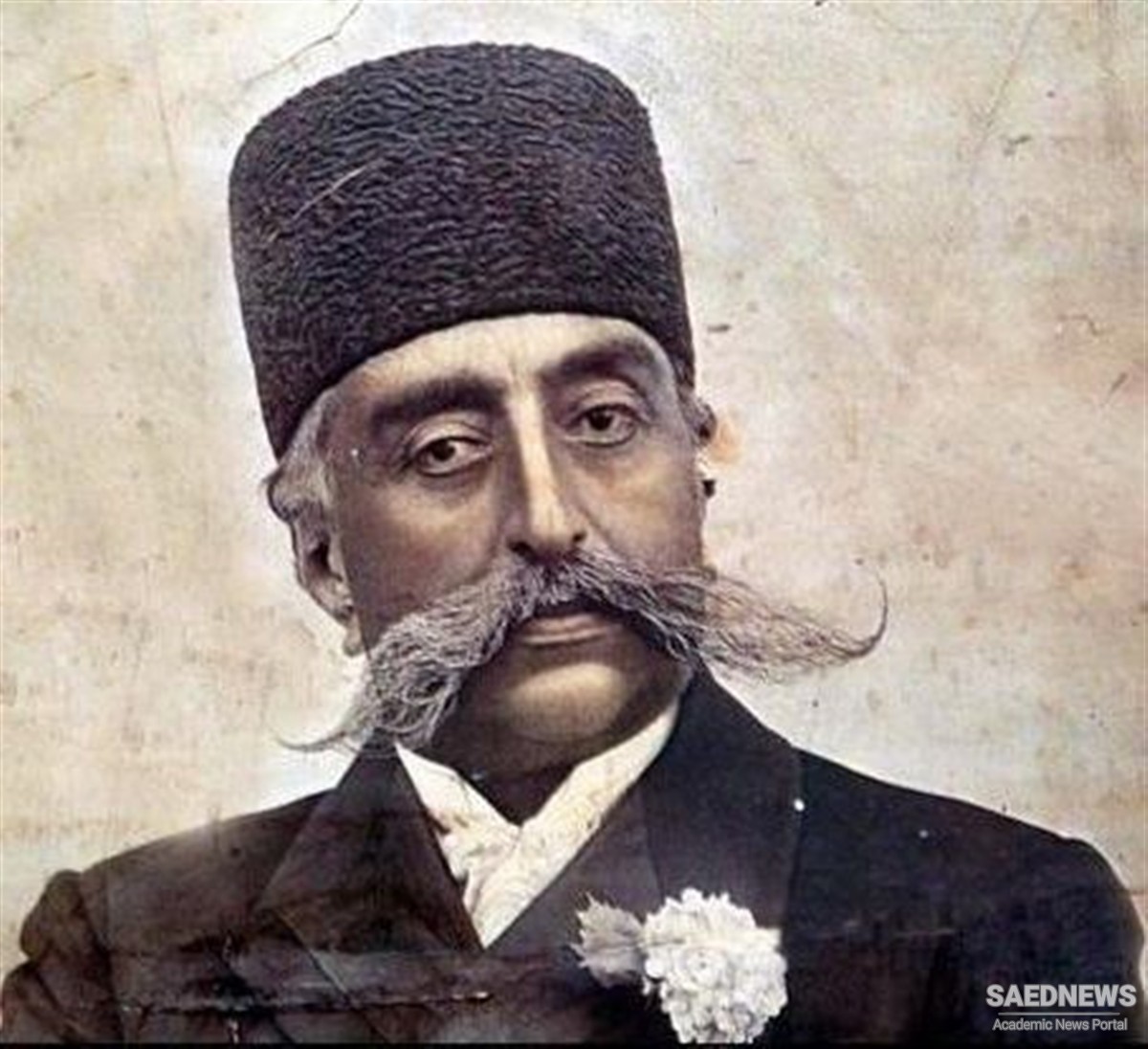The constitution’s crucial article 27, which assigned legislative, judicial, and executive powers to three branches of the government, granted nominal power to the shah. The king’s executive power—known as the laws of ordinance—were to be “carried out by the ministers and state officials in the august name of his Imperial Majesty in such manner as the law defines.” Moreover, article 44 exempted the shah from any political responsibility for the affairs of the state, instead holding the ministers of the state responsible to the legislative branch. Under enormous pressure from the court, however, the framers of the constitution were obliged to assert in article 35 that “the sovereignty is a trust confided as a divine gift by the people to the person of the king.” It is reported that Mohammad ‘Ali Shah only agreed to sign the Supplement to the Fundamental Law in October 1907 after inserting in his own hand the phrase “as a divine gift,” rendering the article obsolete.
Conferring the “divine gift” to the shah in the constitution reflected the constraints and trepidation of the Majles, just as the provision to convene the committee of the mojtaheds to oversee legislation did. However, it would be an error of historical judgment to assume that the Fundamental Law and its Supplement were merely loose translations of European constitutions. The Iranian Constitution was shaped article by article after hours, days, and months of fierce debate in and out of the nascent parliament, and the proceedings of the Majles is witness to the heated exchanges between deputies as well as the sincere optimism with which they engaged in debates. All the more remarkable, this was a document produced by a Majles unaccustomed to the traditions of the Magna Carta, the Long Parliament, the civil and constitutional refinements of John Locke, Montesquieu, and John Stuart Mill and the tradition of legal procedure and secular humanism that had engendered the 1787 Constitution of the United States, the 1789 French Declaration of the Rights of Man, and the 1791 ratification of the American Bill of Rights.
The deputies of the Majles and the people who elected them to office soon realized (as did the English, French, and Americans) that a constitution and constitutionalism did not come easily or cheaply. The mashruteh and implementation of the Fundamental Law resulted in much bloodshed, political conflict, and the chaos of a civil war before being acknowledged as a “revolution” (enqelab). The term in Persian originally denoted a seasonal climatic change or a sudden shift in human medical condition (of the same root as the Arabic verb qalaba, “to turn”). Only in the late nineteenth century, and more clearly during the 1908–1909 civil war, enqelab acquired its modern political meaning and gradually came to replace constitutional “movement” (nahzat) in the revolutionary discourse. However, as early as 1907 the shift in and out of the Majles toward greater radicalization anticipated nothing less than a full-scale revolution.
Between May 1907 and July 1909, the Majles at every turn faced enormous threats to its very survival. A range of issues contributed to the instability of the nascent constitutional regime. Chief among them were disagreement on limits of the legislative authority, growing tensions with the shah and his court, and a constant barrage of defamatory propaganda from Nuri and advocates of the mashru‘eh. Unrest in the provinces provoked by the court and by the powerful tribal khans and the local ulama, as well as serious skirmishes and sectarian fighting on the Ottoman borders, further challenged the young order. By mid-1907, Azarbaijan was being harassed by the royalist Shahseven tribe in the vicinity of Ardabil, who, provoked by the Qajar shah, pillaged towns and villages in the name of securing the crown. Further to the west, in the Orumiyeh region, Kurdish irregulars backed by Ottoman troops repeatedly crossed the border and attacked Assyrian and Armenian villagers in Iranian territory. In Fars, Isfahan, Zanjan, and Kashan urban unrest, sectarian clashes, and banditry were on the rise. Na’eb Hosain, a former member of the Qajar rural police turned bandit, together with his gang, since the late 1890s organized repeated raids on the city of Kashan and villages in its vicinity stretching as far east as the central Iranian desert. Posing himself as a friend of the poor and the underprivileged, in reality he was no more than a ruthless plunderer and killer of innocent people whose reign of terror lasted for more than two decades. Failure to quash the Na’ebis, as they came to be known, epitomized the weakening of the central government during the revolution and its aftermath.


 Constitutional Monarchy, Will of People and Diluted Theocracy in Early Modern Persia
Constitutional Monarchy, Will of People and Diluted Theocracy in Early Modern Persia














































